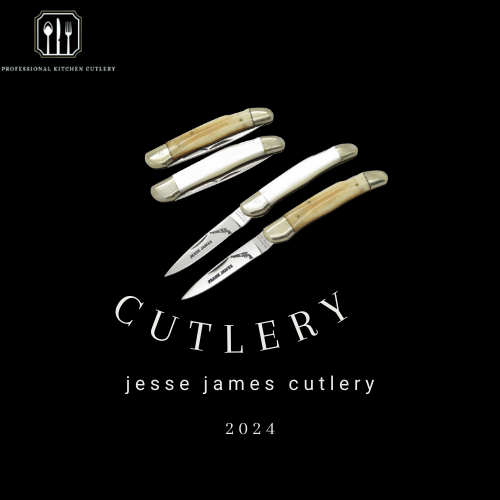what is non toxic silverware?
A set of cutlery free of dangerous metals or chemicals that is suitable for human consumption is known as non-toxic silverware. Bamboo, wood, glass, ceramic, and non-toxic metals like titanium, stainless steel, and alloys devoid of nickel can all be used to make these utensils. Mamavation and AboutWaffles are two excellent resources for anyone searching for non-toxic cutlery.
How do I clean non-toxic silverware?
Aluminum foil and baking soda are two natural materials that can be used to clean silverware. Stack the silverware in a glass baking pan so that it touches the aluminum on all sides. After covering the silver with boiling water, gradually add the baking soda, which will bubble. After the tarnish goes away, aluminum sulfide sticks to the foil in the form of yellow flakes.
What are some eco-friendly options for cleaning non-toxic silverware?
Baking soda and vinegar, baking soda and salt, and baking soda and aluminum foil are environmentally acceptable ways to clean non-toxic silverware. After lining a glass baking pan with aluminum foil, arrange the silverware inside, making sure that every piece comes into contact with the aluminum. After covering the silver with boiling water, gradually add baking soda to cause foaming. After the tarnish goes away, aluminum sulfide sticks to the foil in the form of yellow flakes.
Can I use a dishwasher to clean my non-toxic silverware?
1. Use warm water to rinse the cutlery to get rid of any residue or food fragments.
2. Because citric acid can pit silver, use a dishwasher detergent free of this ingredient. Steer clear of bleach because most automatic dishwasher detergents contain it and it can turn silver yellow.
3. Carefully load the silverware into the dishwashing basket to keep it from contacting the stainless steel and to prevent scratches.
4. To avoid patina accumulation on the sterling, remove the silverware following the last rinse but before the heated drying cycle starts. Use a gentle cloth to gently dry each piece one at a time. Make sure the pieces are completely dry before storing.
In conclusion, non-toxic cutlery can be cleaned in a dishwasher.
How do I store non-toxic silverware?
Use these suggestions to store silverware that isn’t toxic:
1. To avoid scratches and damage, store in a different drawer or compartment. To keep them safe from dust and scratches, cover them with a soft cloth or drawer liner.
2. To avoid breakage, do not stack your silverware too tightly.
Visit sites like Mamavation’s list of the greatest non-toxic flatware and silverware available for additional information on non-toxic silverware. This list takes eco-friendly materials and safe working conditions into account.
3. The definitive reference on non-toxic silverware from AboutWaffles offers a thorough inventory of materials that are safe to eat for humans and are devoid of dangerous metals or chemicals.
How do i clean it?
Natural ingredients can be used to clean cutlery without using any hazardous chemicals. These three techniques are as follows:
How do I remove tarnish from non toxic silverware?
Natural ingredients can be used to clean cutlery without using any hazardous chemicals. Baking soda and aluminum foil can be used as one approach to remove tarnish and create foam. Baking soda and salt, which can be used with boiling water and kosher salt, is another technique. Before adding the mixture to the silverware, let it set for five minutes. The silverware needs to be completely dried after cooling. A different approach is to combine baking soda and vinegar, or warm water and baking soda.
what causes tarnish on silverware?
Valuable silverware can tarnish as a result of a chemical interaction between the silver and sulfur-containing airborne chemicals. Moisture, exposure to chlorine, and the presence of copper in the silverware are additional reasons that cause tarnish.
How do i polish non-toxic silverware?
Natural ingredients can be used to clean cutlery without using any hazardous chemicals. Baking soda and aluminum foil can be used as one approach to remove tarnish and create foam. Baking soda and salt, which can be used with boiling water and kosher salt, is another technique. Before adding the mixture to the silverware, let it set for five minutes. The silverware needs to be completely dried after cooling. A different approach is to combine baking soda and vinegar, or warm water and baking soda.
How to arrange non toxic silverware?
To keep non-toxic silverware safe from scratches and damage, it must be kept in a separate drawer or compartment. To keep them safe from dust and scratches, cover them with a soft cloth or drawer liner. See sources like The Conscious Insider’s list of the greatest non-toxic flatware and silverware available, which takes eco-friendly materials and healthy working conditions into account, for additional information on non-toxic cutlery.
Recommend a polish for non-toxic silverware?
Tarnish on silverware can be eliminated with non-toxic silverware polishing techniques. The Baking Soda Bath recipe from Martha Stewart calls for adding baking soda and salt to a heated aluminum pan, then swirling to dissolve them. Tarnish is removed from silver objects by immersing them in a baking soda bath. The Baking Soda and Aluminum Foil Method from Greenopedia calls for coating a glass baking pan with aluminum foil, adding silverware to the pan, and then covering the silverware with boiling water. Tarnish disappears as baking soda is slowly poured and foams.



